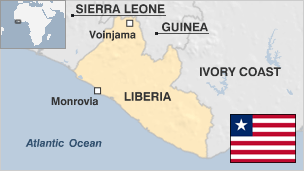Looking back few years ago, I remember sitting in couple of meetings discussing the plans for the development of a roadmap to a National Vision for Liberia. From June 2010 up to its launch in February 2010 several meetings were held and studies done on so many themes and cross-cutting issues. There were meetings of various stakeholder groups including religious leaders, civil society activities and political leaders. Vision 2030 therefore comes with the distinction of being a policy developed from the bottom to the top, and not an ‘arm-chair’ creation. At present it is been spearheaded by a committee reflective of our national mosaic.
We still look forward to a complete possession of the vision by the people. By this we hope that the Vision 2030 becomes legislated and issues are time-specific till 2030. A great lesson can be learned from Botswana where the vision was done into phases legislated by the National Parliament. The gradual and successful implementation of Batswana’s vision, largely supported by a binding legislation over the years has ranked the country as a fast growing economy in Africa.
Key issues of Liberia’s Vision 2030 include national identity and national reconciliation. How do we go about defining the Liberian identity and citizenship? This is something that must begin in our schools with emphasis on civic education at the basic level. Reconciliation of course is a long term process and can be merged into the identity question. By 2030 it will be 27 years after the civil war, at which time a new generation will be out. That generation will be the reconciled generation depending on the balance in information and education on our national history and mosaic they receive. The kind of information and education will either weaken or strengthen the identity. At this point the beginning of reconciliation, particularly in the aftermath of a controversial Truth and Reconciliation Commission (TRC) program, needs to engender more public dialogues on the issues at stake. Despite the controversies, the Report of the TRC cannot be considered in anyway irrelevant, Liberians will therefore want to discuss its findings and recommendations and derive at a way forward. Another issue of reconciliation which we cannot continue to ignore is reparation for victims. The issue of providing reparations for victims (individuals and communities) of the civil war whose present living conditions are defined by events of the war will be a remarkable start of reconciliation in our vision project.
A second goal of the vision is to lead Liberia to a middle income economy come 2030. This is a thematic issue that will be the center of discussion in the next edition. At present Liberia is among the world’s poorest nations despite the abundance of natural resources and arable land and space for large scale agriculture. This ‘resource curse’ as development experts describe the conditions of nations like Liberia is common in the Mano River Basin area and the most of sub-Saharan Africa- the region that has abundant natural resources but poor people. Reversing this resource curse towards that of progressive economic growth and human development requires long term strategic planning that reflects the needs, and broader views and aspirations of the population.
The vision is therefore most needed at this time as the country transitions from an emergency situation of recovery from violence and instability, and low-growth to peace and sustainable development. At the heart of this should be the question of governance and management in both the public and private sectors. Liberia’s stagnation in the low income category has largely been due to poor governance and ineffective management of state institutions and resources. Effective governances with set guidelines and rules supported and executed by responsible institutions have to be emphasized in this transition. The on-going public sector reform must therefore focus more on institution building to implement relevant policies and those relating directly to the vision.
Finally, the beginning of Vision 2030 as a property of the Liberian people should be its enactment into law thereby making it a binding national development agenda till 2030. Legislating this Vision 2030 will insulate it from political manipulations. Trends of manipulation of development agendas are replete in our history where successive governments have ignored projects of their predecessors. This is the same in most of Africa. A ‘people’s vision’ therefore must be the guiding platform for every political organization seeking state power. There are three presidential terms between now and 2030 (considering the present Constitution) and two more elections. In the next two elections, with a the vision enacted as a national development agenda, political parties and candidates need not entice the voting public with any platforms and new development plans, but with strategies and available capacities to implement the vision in time. With a law in place, the next step will be to build responsible institutions adapted to the rules of governance and implementation of the vision. With strong institutions in force, and governing rules and procedures enforced, Liberia can maximizes immense welfare benefits form it resources and maintain peace and stability. Institutions, rules and effective management are also critical to protecting the resources needed for the vision from public theft.
In the Cause of Democracy and Social Justice the Pen Shall Never Run Dry
Subscribe to:
Post Comments (Atom)




2 comments:
We can start with the national identity and reconciliation by teaching ethnicity in our school. History about each ethnic group.
The way forward to a better future ( for Libeia) has been laid out. What strike the most for me is the point on Civic Education and the building of responsible institutions etc.... perhaps we can yeild significant results when pen/paper etc, are transformed into action. Policy without action doesn`t count.
Post a Comment